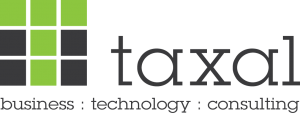Carl Bass’s (President and CEO of Autodesk) presentation at the 2016 Design Conference in San Francisco spurred me to think more on topics IoT. Specifically, his conversation spurred me to reflect that the IoT’s future is, in part, going to be defined by the enthusiasm (and possibly genius) of individual innovators, new entrants and communities of like-minded ‘boutique’ innovators.
Developing radical new products or breaking into new markets is tough. The thing that’s different now is that many technologies developed for the IoT world enable all comers to define completely new products and services without many of the overheads of ‘traditional’ product development. In addition, today’s innovators can take existing (open) products and (open) services and transform them into something new, possibly radical; quickly, and at a fraction of the cost of former generations of product (and service) developers.
The barriers to entry for those looking to do something valuable or different (or both) are being shattered by today’s new technologies. For example, free products and trials abound for 3D (CAD) design software from numerous suppliers. These include on-line products, for example Autodesk 123D Design and Autodesk Fusion 360, OnShape, and (dependant on pricing and availability) the soon to be released Xdesign platform from SolidWorks.
Low cost manufacturing is important (if you need to make physical parts). In this, 3D printing has an important part to play. But 3D printing isn’t just for physical parts. Now, thanks to companies like Nano Dimension, one can also produce low-volume printed circuit boards (PCBs) on demand. Of course, you can always order (low and high volume) PCB’s on-line through numerous web providers. Electronic design might, for instance, be developed with products such as Autodesk’s 123D Circuits. But there’s also an explosion in low cost (some configurable) packaged electronics that’s there to help. Off-the shelf products with the ability to measure,process, control and automate come from the likes of Intel, Raspberry and many others.
To me, I think the changing dimensions in the world of software development reflect one of the biggest shifts to breaking down the barriers of individual (IoT) innovation. Even the most inexpert innovator can now develop IoT and other software. Google’s Blockly, for example, is a great example of how one can simplify software development. This technology forms the basis of software tools including MIT’s App Inventor and Wyliodrin. For those more attuned to software development there are many more sophisticated development tools and on-line environments. Free or low-cost development tools and platforms abound, even from the likes of software giant IBM (via developerWorks) c/o their Bluemix platform.
For those intrigued by the possibility of getting involved, the problem is often knowing where to start. There are (perhaps too) many options. It really depends on what you want to do. Do you have a product or some software in mind? Where do you want or need your software to run? On the web? On a product? Both? For starters, I’d suggest you look at the communities that exist (also see my former article on open innovation); maker movements, fab labs, innovation networks, idea hubs etc. Also, look at communities that software suppliers support. Autodesk with their Forge program and IBM with developerWorks for example. But there are others; far too many to mention!
Whatever you decide, testing the waters can be illuminating, exciting and rewarding. Do share your experience; both failures and successes, and preferably through open forum. Others will be grateful to learn from you. As you, I’m sure, will learn from others.
